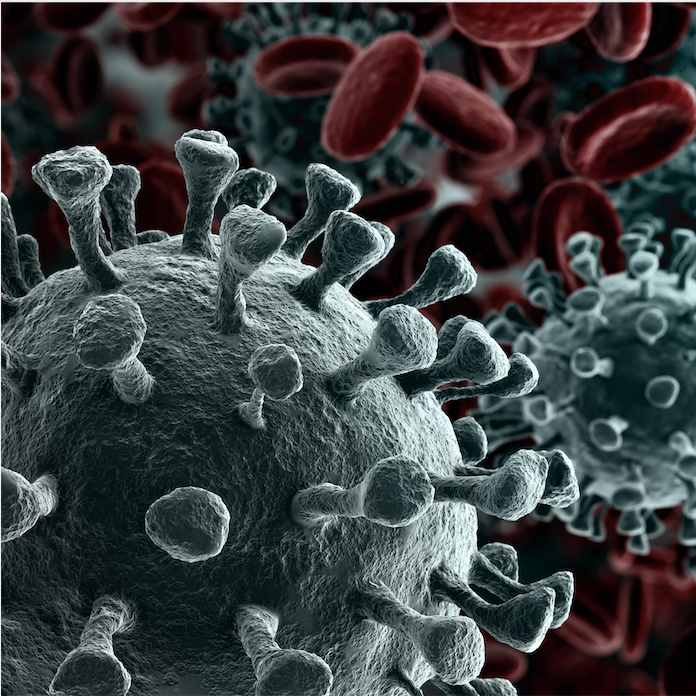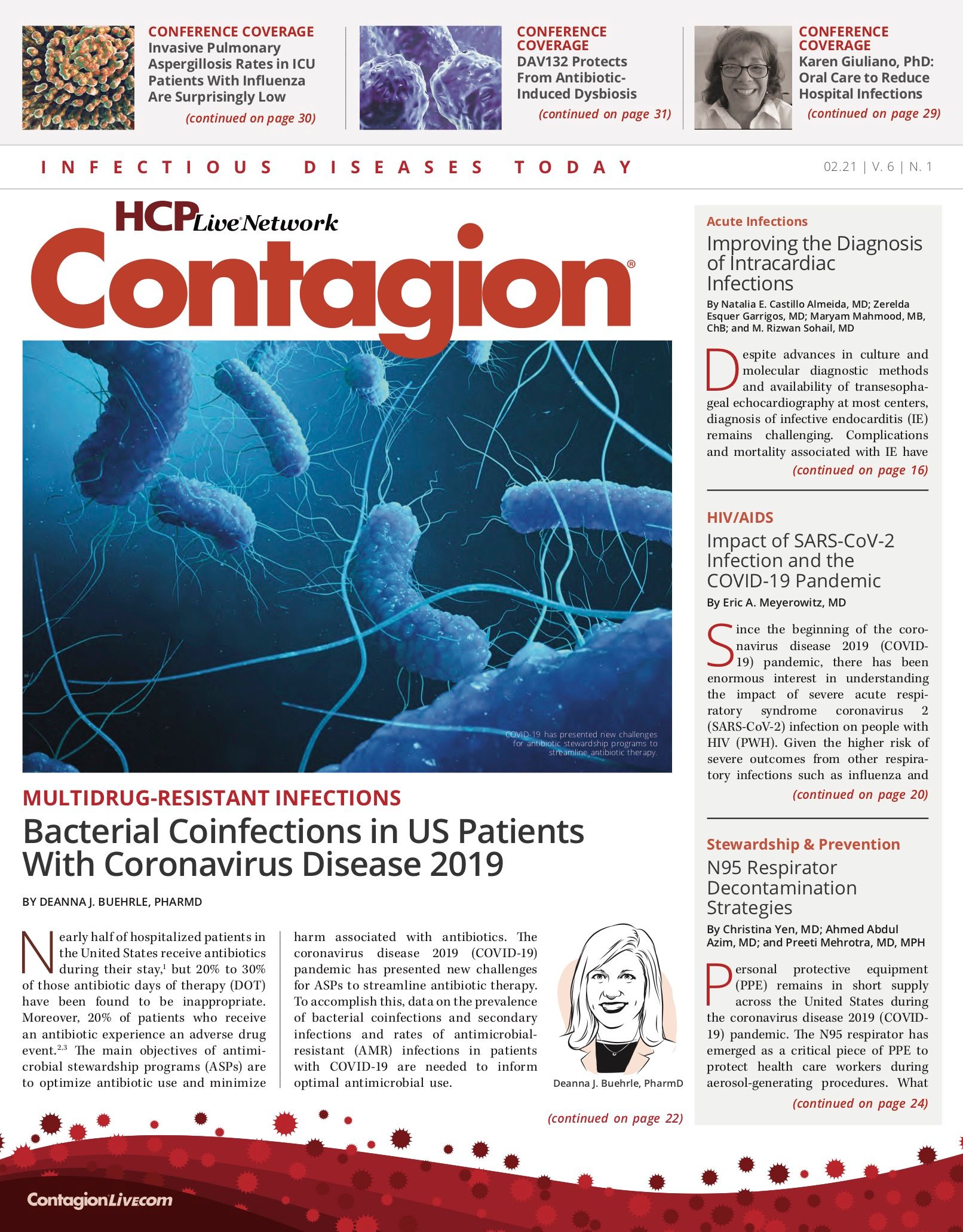Impact of SARS-CoV-2 Infection and the COVID-19 Pandemic on People with HIV

Since the beginning of the coronavirus 2019 (COVID-19) pandemic, there has been enormous interest in understanding the impact of severe acute respiratory syndrome coronavirus 2 (SARS-CoV-2) infection on people with HIV (PWH). Given the higher risk of severe outcomes from other respiratory infections such as influenza and pneumococcal pneumonia for PWH, clinicians were concerned there might be a similar elevated risk for this new viral infection.1,2 Additionally, it quickly became clear that many common comorbidities found in PWH, including obesity, diabetes, and cardiovascular disease, were risk factors for severe COVID-19 outcomes.3,4 Although there is still much to learn, some preliminary conclusions can now be made based on the accumulated global experience to date. We will primarily address 4 key questions: 1) Are PWH at increased risk for SARS-CoV-2 infection; 2) Are they at higher risk for hospitalization after diagnosis; 3) Is HIV status or degree of HIV-related immune deficiency a risk for severe outcomes; and 4) Do antiretrovirals used for HIV have activity against SARS-CoV-2.
The impact of HIV status on the likelihood of SARS-CoV-2 diagnosis is currently unknown. An analysis of 23 studies that included PWH with positive SARS-CoV-2 tests in the context of a general population found that PWH were overrepresented.5 However, without correcting for unequal access to SARS-CoV-2 testing, it is difficult to interpret these findings.6 A large population-based study from New York City, with a local HIV prevalence of around 1.5%, found that PWH represented 1.06% of the nearly 205,000 total COVID-19 cases and were therefore not overrepresented during the study period.7 Serological surveys may eventually be able to shed additional unbiased light on this issue. With well described, overlapping structural factors determining risk for both infections, there is reason to believe PWH may be at higher risk of SARS-CoV-2 infection. Racial and economic disparities are well described in the HIV global epidemic, with Blacks and Hispanics far more likely to be diagnosed with HIV than Whites, and poverty also a driving risk factor for infection.8,9 Race and poverty are similarly key determinants of risk for SARS-CoV-2 infection. A study at a large hospital system in Boston during a major local epidemic found that almost 80% of PWH diagnosed with SARS-CoV-2 were Black or Hispanic/Latinx compared with 40% in the HIV clinic population.10 Racial disparities seen in COVID-19 outcomes are attributable to differential infection rates.11
Many studies have tried to assess the risk for hospitalization for PWH after COVID-19 diagnosis. According to findings from a New York City-based study that included data from 5 hospitals, 72 of 93 PWH with COVID-19 were hospitalized, though no comparison was made to the general population.12 Results from a multicenter study with over 50,000 people with COVID-19, including 404 with HIV, used propensity score matching and found that PWH were more likely to be hospitalized (19.3% vs 11.4%).13 Investigators found no increase in severe outcomes based on HIV status, suggesting that there may have been a lower threshold for admission for PWH who were diagnosed with COVID-19 rather than a medical necessity for hospitalization. Study investigators from a referral hospital in Cape Town, South Africa, of the first 116 hospitalized patients with COVID-19 reported that 21% were PWH, compared with a local seroprevalence of 12.6%.14 A pooled analysis of multiple studies found no overall difference in hospital admission for PWH compared to those without HIV, suggesting that there may be regional or institutional differences that would explain some of the differences reported in various studies.5
Investigators continue to describe the association of HIV status and severe COVID-19 outcomes. According to results of an early study of a cohort of over 3.5 million people with an HIV prevalence of 16% from the Western Cape in South Africa, there were 625 COVID-19 deaths and 22,308 total diagnoses during the study period. HIV status was associated with COVID-19 mortality with an adjusted hazard ratio over 2.15 The authors adjusted for location to try to control for structural factors that might have contributed to increased risk of infection or mortality, but residual confounding is possible. Of the PWH in this study, 33% had a CD4 cell count measured during the admission for COVID-19 and 35% of those had CD4 cell counts of 200 cells/mL or less, which was associated with death. Findings from a multicenter study that included 286 PWH with confirmed COVID-19 showed that a CD4 cell count of less than 200 was similarly associated with more severe outcomes.16 Another multicenter retrospective cohort study identified 49,763 people without HIV and 404 PWH and COVID-19. Investigators performed propensity score matching and found that HIV was not a risk factor for mortality; instead, non-HIV comorbidities were the drivers of increased severity.13 The authors did not report CD4 cell counts for PWH included in this study. The accumulating evidence suggests that non-HIV comorbidities are the major drivers of COVID-19 severity for PWH, though those with CD4 cell counts of less than 200 are likely at higher risk for worse outcomes.
The HIV protease inhibitor lopinavir/ritonavir was known to have in vitro activity against the major protease of SARS-CoV and Middle East respiratory syndrome coronavirus and there was early interest in using the agents for SARS-CoV-2.17 Lopinavir/ritonavir has been extensively studied in multiple negative, randomized controlled trials to date.18,19 Results of pharmacokinetic studies suggest the levels of lopinavir achieved with standard dosing are nowhere near what would be required to inhibit SARS-CoV-2 in vivo.20 Clinicians have considered tenofovir as a possible treatment through the inhibition of the SARS-CoV-2 RNA-dependent RNA polymerase. Among a large cohort of nearly 80,000 PWH on antiretroviral therapy across many clinics in Spain, there were 236 cases of COVID-19 and 20 deaths during a study period.21 The 16% of individuals on the nucleoside reverse transcriptase inhibitor combination of tenofovir-disoproxil fumarate with emtricitabine (TDF/FTC) had the lowest risk of hospitalization; however, the authors did not control for possible differential age distribution or comorbidities between the subgroups. Many have pointed out that it is quite plausible that the participants on TDF/FTC may be younger or have less kidney disease or fewer other comorbidities, which could explain the findings. According to results from an observational study of HIV-negative individuals from Spain that included 250 people not receiving pre-exposure prophylaxis (PrEP), 409 receiving TDF/FTC, and 91 receiving tenofovir-alafenamide with emtricitabine (TAF/FTC) for PrEP, there was a higher SARS-CoV-2 seroprevalence among those taking PrEP. However, the investigators made no adjustments for possible differences in exposures or behaviors.22 Although studies will continue, there is currently no evidence for clinically meaningful activity of any HIV drugs against SARS-CoV-2.
From the extensive global experience reported to date, risk for severe COVID-19 is largely driven by age and non-HIV comorbidities, similar to what is seen for people without HIV. However, those with CD4 cell counts under 200 may be at elevated risk for worse outcomes. Infection risk is driven by similar social determinants of health that define risk for HIV infection. Study findings have inconsistently shown increased rates of hospitalization, but this is more likely due to a lower threshold for admission for PWH. There is no evidence for clinically meaningful activity of any HIV antiretrovirals against SARS-CoV-2. One area of possible significant impact on PWH, but with too little data to date, concerns the effects of pandemic-related care disruption on HIV outcomes. Clinic closures may lead to delays in visits or labs or lapses in medication refills. Additionally, job loss and worsened food and housing insecurity related to the pandemic may adversely impact PWH. Thus, although it is important to make some preliminary conclusions, the full toll of COVID-19 on PWH is likely to be significant. Long-term interventions should target not just improving acute outcomes but also structural determinants of risk for both infections.
Eric A. Meyerowitz, MD, is an attending physician in the Division of Infectious Diseases at Montefiore Medical Center and an assistant professor of medicine at Albert Einstein College of Medicine in the Bronx, New York.
References
1. Sheth AN, Althoff KN, Brooks JT. Influenza susceptibility, severity, and shedding in HIV-infected adults: a review of the literature. Clin Infect Dis. 2011;52(2):219-227. doi:10.1093/cid/ciq110
2. Harboe ZB, Larsen MV, Ladelund S, et al. Incidence and risk factors for invasive pneumococcal disease in HIV-infected and non-HIV-infected individuals before and after the introduction of combination antiretroviral therapy: persistent high risk among HIV-infected injecting drug users. Clin Infect Dis. 2014;59(8):1168-1176. doi:10.1093/cid/ciu558
3. Docherty AB, Harrison EM, Green CA, et al; ISARIC4C Investigators. Features of 20 133 UK patients in hospital with COVID-19 using the ISARIC WHO Clinical Characterisation Protocol: prospective observational cohort study. BMJ. 2020;369:m1985. doi:10.1136/bmj.m1985
4. Petrilli CM, Jones SA, Yang J, et al. Factors associated with hospital admission and critical illness among 5279 people with coronavirus disease 2019 in New York City: prospective cohort study. BMJ. 2020;369:m1966. doi:10.1136/bmj.m1966
5. Johnston R. The first 6 months of HIV-SARS-CoV-2 coinfection: outcomes for 6947 individuals. Curr Opin HIV AIDS. 2021;16(1):54-62. doi:10.1097/COH.0000000000000654
6. Dryden-Peterson S, Velásquez GE, Stopka TJ, Davey S, Lockman S, Ojikutu B. SARS-CoV-2 testing disparities in Massachusetts. medRxiv. Preprint posted online November 4, 2020.doi:10.1101/2020.11.02.20224469
7. Braunstein SL, Lazar R, Wahnich A, Daskalakis DC, Blackstock OJ. COVID-19 infection among people with HIV in New York City: a population-level analysis of linked surveillance data. Clin Infect Dis. Published online November 30, 2020. doi:10.1093/cid/ciaa1793
8. Hess KL, Hu X, Lansky A, Mermin J, Hall HI. Lifetime risk of a diagnosis of HIV infection in the United States. Ann Epidemiol. 2017;27(4):238-243. doi:10.1016/j.annepidem.2017.02.003
9. Pellowski JA, Kalichman SC, Matthews KA, Adler N. A pandemic of the poor: social disadvantage and the U.S. HIV epidemic. Am Psychol. 2013;68(4):197-209. doi:10.1037/a0032694
10. Meyerowitz EA, Kim AY, Ard KL, et al. Disproportionate burden of coronavirus disease 2019 among racial minorities and those in congregate settings among a large cohort of people with HIV. AIDS. 2020;34(12):1781-1787. doi:10.1097/QAD.0000000000002607
11. Zelner J, Trangucci R, Naraharisetti R, et al. Racial disparities in COVID-19 mortality are driven by unequal infection risks. Clin Infect Dis. Published online November 21, 2020. doi:10.1093/cid/ciaa1723
12. Ho HE, Peluso MJ, Margus C, et al. Clinical outcomes and immunologic characteristics of COVID-19 in people with HIV. J Infect Dis. Published online June 30, 2020. doi:10.1093/infdis/jiaa380
13. Hadi YB, Naqvi SFZ, Kupec JT, Sarwari AR. Characteristics and outcomes of COVID-19 in patients with HIV: a multicentre research network study. AIDS. 2020;34(13):F3-F8. doi:10.1097/QAD.0000000000002666
14. Parker A, Koegelenberg CFN, Moolla MS, et al. High HIV prevalence in an early cohort of hospital admissions with COVID-19 in Cape Town, South Africa. S Afr Med J. 2020;110(10):982-987. doi:10.7196/SAMJ.2020.v110i10.15067
15. Boulle A, Davies MA, Hussey H, et al. Risk factors for COVID-19 death in a population cohort study from the Western Cape Province, South Africa. Clin Infect Dis. Published online August 29, 2020. doi:10.1093/cid/ciaa1198
16. Dandachi D, Geiger G, Montgomery MW, et al; HIV-COVID 19 Consortium. Characteristics, comorbidities, and outcomes in a multicenter registry of patients with HIV and coronavirus disease-19. Clin Infect Dis. Published online September 9, 2020. doi:10.1093/cid/ciaa1339
17. Chu CM, Cheng VCC, Hung IFN, et al; HKU/UCH SARS Study Group. Role of lopinavir/ritonavir in the treatment of SARS: initial virological and clinical findings. Thorax. 2004;59(3):252-256. doi:10.1136/thorax.2003.012658
18. Cao B, Wang Y, Wen D, et al. A trial of lopinavir-ritonavir in adults hospitalized with severe COVID-19. N Engl J Med. 2020;382(19):1787-1799. doi:10.1056/NEJMoa2001282
19. RECOVERY Collaborative Group. Lopinavir-ritonavir in patients admitted to hospital with COVID-19 (RECOVERY): a randomised, controlled, open-label, platform trial. Lancet. 2020;396(10259):1345-1352. doi:10.1016/S0140-6736(20)32013-4
20. Schoergenhofer C, Jilma B, Stimpfl T, Karolyi M, Zoufaly A. Pharmacokinetics of lopinavir and ritonavir in patients hospitalized with coronavirus disease 2019 (COVID-19). Ann Intern Med. 2020;173(8):670-672. doi:10.7326/M20-1550
21. Del Amo J, Polo R, Moreno S, et al; The Spanish HIV/COVID-19 Collaboration. Incidence and severity of COVID-19 in HIV-positive persons receiving antiretroviral therapy: a cohort study. Ann Intern Med. 2020;173(7):536-541. doi:10.7326/M20-3689
22. Ayerdi O, Puerta T, Clavo P, et al; Sandoval Study Group. Preventive efficacy of tenofovir/emtricitabine against severe acute respiratory syndrome coronavirus 2 among pre-exposure prophylaxis users. Open Forum Infect Dis. 2020;7(11):ofaa455. doi:10.1093/ofid/ofaa455

